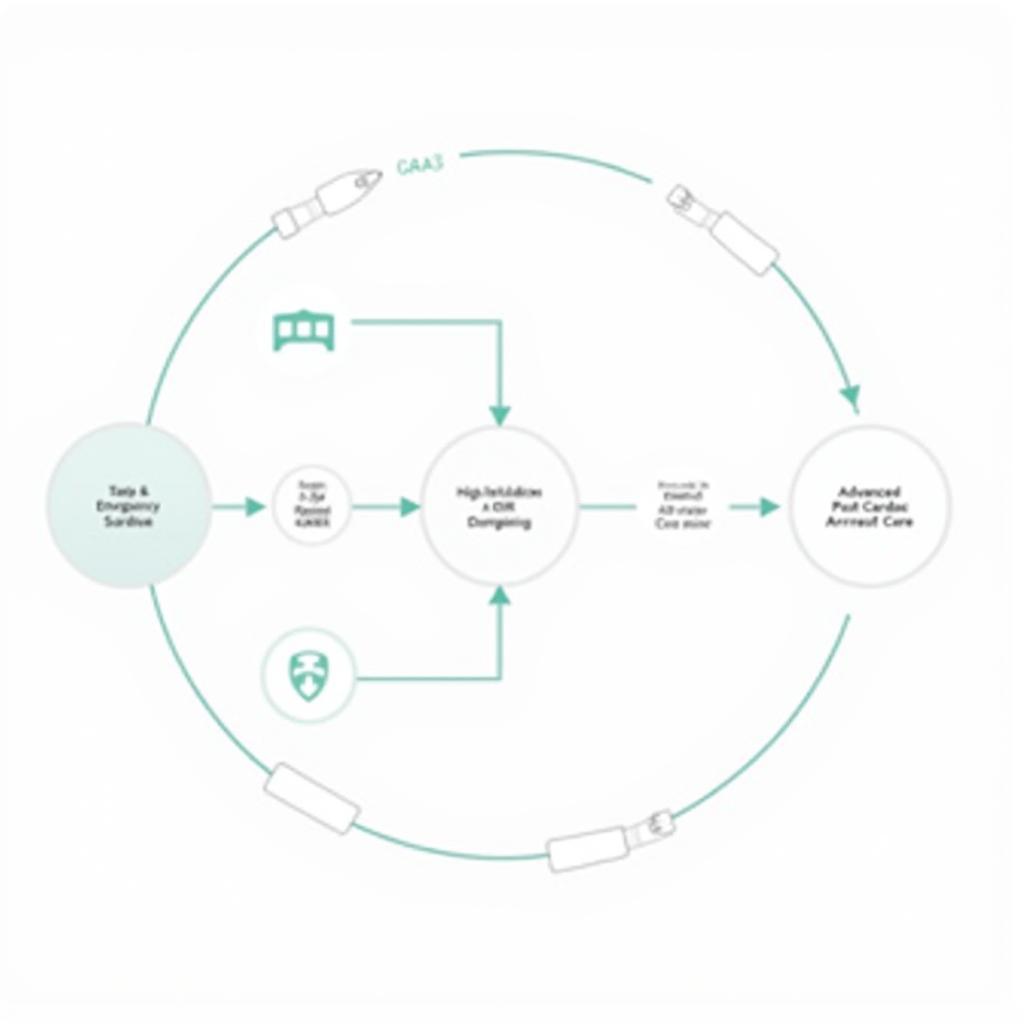In-hospital Chain Of Survival Steps are crucial for improving patient outcomes during cardiac arrest and other life-threatening emergencies. These steps, when executed swiftly and accurately, can significantly increase the chances of survival and minimize long-term complications. This comprehensive guide will delve into each step, highlighting their importance and practical application within a hospital setting.
Understanding the in-hospital chain of survival is essential for every healthcare professional. It provides a structured approach to managing emergencies, ensuring that all necessary actions are taken promptly and effectively. Early recognition and response are paramount in these situations, and a well-rehearsed chain of survival can make all the difference. Here at San Jose Hospital, we prioritize patient safety and well-being, and adherence to these life-saving steps is a cornerstone of our commitment to exceptional care. For more specific information regarding adults in this context, please refer to our in-hospital chain of survival for adults.
The Critical Steps in the In-Hospital Chain of Survival
The in-hospital chain of survival typically comprises several key steps, each building upon the previous one to create a seamless and effective response. These steps are:
- Early Recognition and Activation of the Emergency Response System: This involves identifying the signs of a deteriorating patient and immediately activating the appropriate emergency response team.
- Early High-Quality CPR: Beginning chest compressions and rescue breaths as soon as possible is crucial to maintain blood flow and oxygen delivery to vital organs.
- Rapid Defibrillation: If the cardiac arrest is due to a shockable rhythm, rapid defibrillation can restore a normal heart rhythm.
- Advanced Life Support: This includes administering medications, securing an airway, and providing other advanced interventions to stabilize the patient.
- Integrated Post-Cardiac Arrest Care: After the initial resuscitation, ongoing care in a specialized unit is vital for optimizing recovery and minimizing long-term complications. You can find further details regarding the in-hospital chain of survival on our dedicated page: in hospital chain of survival.
 In-Hospital Chain of Survival Steps Diagram
In-Hospital Chain of Survival Steps Diagram
What are the in-hospital chain of survival steps for adults?
The in-hospital chain of survival steps for adults mirror the general principles, with specific considerations for adult physiology and common causes of cardiac arrest.
How important is early recognition in the in-hospital chain of survival steps?
Early recognition is arguably the most crucial step, as it triggers the entire chain of survival. Delays in recognizing a deteriorating patient can significantly impact the effectiveness of subsequent interventions. Our page dedicated to the adult cardiac chain of survival provides more detailed insights: in hospital adult cardiac chain of survival.
 Early Recognition of Cardiac Arrest Symptoms
Early Recognition of Cardiac Arrest Symptoms
Why is high-quality CPR so vital in the in-hospital chain of survival?
Effective CPR is essential for maintaining circulation and oxygenation during cardiac arrest, buying time until definitive treatment can be provided.
What is the role of rapid defibrillation in the in-hospital chain of survival steps?
Rapid defibrillation is critical for restoring a normal heart rhythm in cases of ventricular fibrillation or pulseless ventricular tachycardia, the most common shockable rhythms in cardiac arrest.
What does advanced life support entail in the in-hospital chain of survival?
Advanced life support involves a range of interventions, including airway management, intravenous access, medication administration, and advanced cardiac life support protocols. You can also learn more about the pediatric in-hospital chain of survival here: in hospital pediatric cardiac chain of survival.
Why is post-cardiac arrest care important in the in-hospital chain of survival?
Post-cardiac arrest care focuses on optimizing organ function, managing complications, and facilitating neurological recovery after the initial resuscitation. For those interested in out-of-hospital care for children, we have a dedicated resource: pediatric out-of-hospital chain of survival 6 steps.
 Post-Cardiac Arrest Care: Patient Monitoring
Post-Cardiac Arrest Care: Patient Monitoring
In conclusion, the in-hospital chain of survival steps provide a structured framework for managing life-threatening emergencies, emphasizing early recognition, high-quality CPR, rapid defibrillation, advanced life support, and post-cardiac arrest care. By adhering to these steps, healthcare professionals can significantly improve patient outcomes and increase the chances of survival following cardiac arrest.
When you need support, please contact us at Phone Number: 02437655121, Email: [email protected] or visit us at: No. 298 Cau Dien Street, Minh Khai, Bac Tu Liem, Hanoi, Vietnam. We have a 24/7 customer care team.